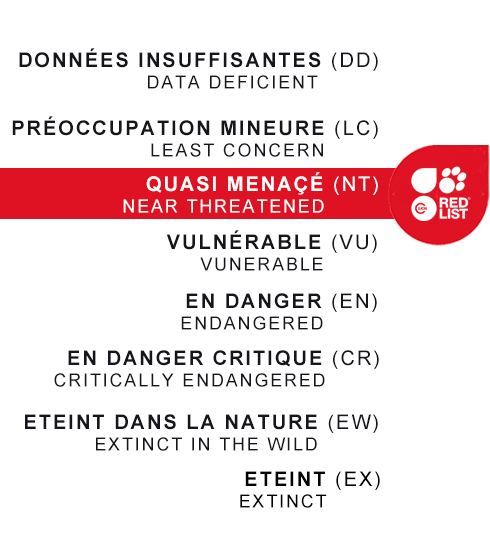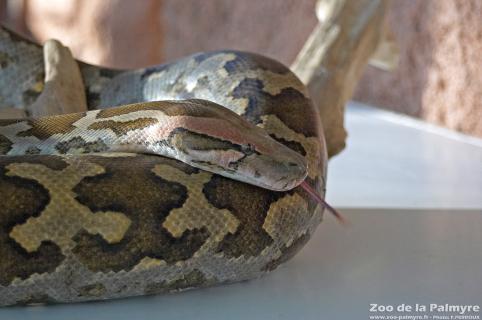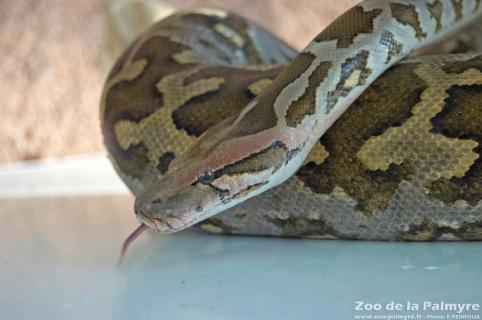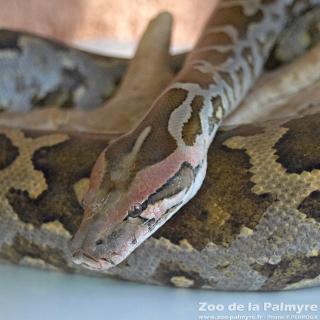Indian Rock Python

Indian Rock Python

-
Class
Reptilia -
Order
Squamates -
Familly
Boidae
-
 up to 7m
up to 7m -
 up to 100kg
up to 100kg -
 2–3 months
2–3 months -
 up to 100
up to 100 -
 up to 30 years
up to 30 years
-
Diet
carnivorous (rodents, small mammals) -
Habitat
tropical forests, close to water sources -
Range
India, Pakistan, Sri Lanka, Nepal -
Population in the wild
En diminution -
IUCN REDLIST status


These tree-dwelling snakes like to cool down in the water when it is very hot.
Their hunting technique consists of biting their prey then rolling themselves around them and strangling them by constriction (squeezing them harder and harder).
Like all Boidae, Indian Rock Pythons have thermosensitive dimples in their nose. Carpeted with thermo-receptors linked to the brain, these allow snakes to detect minute rises in temperature, particularly the heat emitted by another animal’s body. By analysing these thermal messages, snakes can locate their prey and work out how far away they are. This enables them to bite with precision, even in total darkness.
A python’s size depends on its age but also on its diet: the more it eats, the more it grows. The more it grows, the more it has to change its skin, which becomes too small. The skin slips from front to back, gradually revealing a new, much more brightly coloured skin. A snake that is about to shed its skin can be recognised by its dull skin and bluish eyes.
Indian Rock Pythons can easily be distinguished from other types of pythons by studying the top of their heads, where they have a distinctive arrow-shaped mark. The molurus molurus sub-species can also have a pink colouring.





